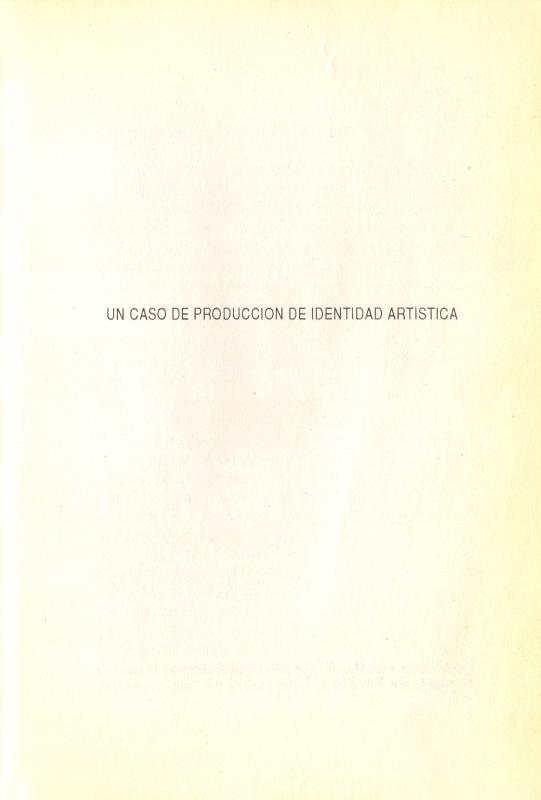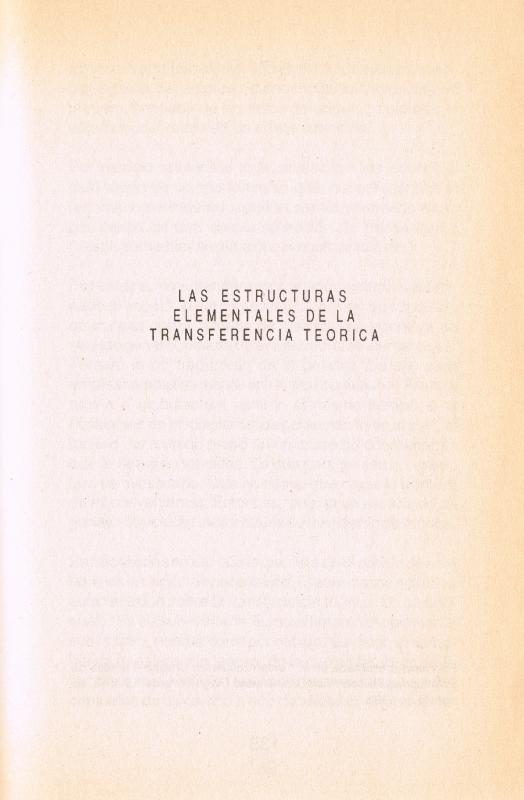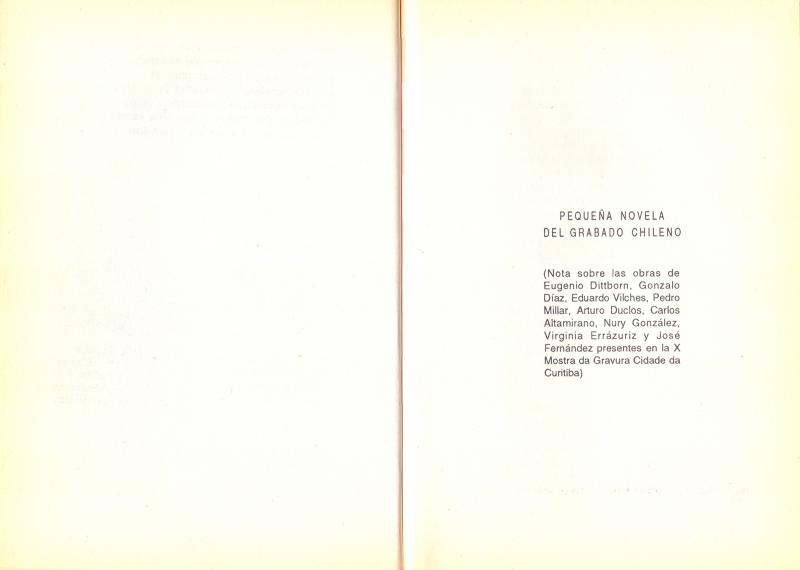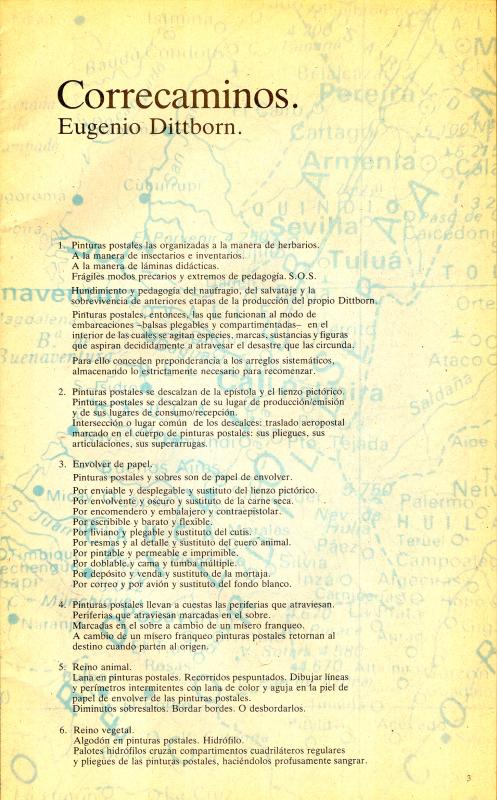“La novela chilena del grabado” [The Chilean Novel About Printing] (1993) is the text of a lecture given by the art critic and curator Justo Pastor Mellado (b. 1949) at the XVII Coloquio de Historia del Arte, the seminar hosted in Mexico City by the Instituto de Investigaciones Estéticas de la UNAM, and subsequently published in the materials that documented the event. A second version of the text became the second chapter of the eponymous book (1995) that included a number of essays about Latin American exhibitions. The book suggests that Chilean art history should be viewed through a prism of printing in order to foster a body of criticism of the pictorial work that defines Chilean modernity. Mellado refers to various concepts in support of his suggestion, including the idea of “transference,” meaning connections or tendencies that facilitate the transfer of concepts from one field of knowledge to another. He mentions two main instances in Chile when a transference of artistic information took place. The first of these involved José Balmes (1927–2016), who reorganized the visual arts in the 1960s. The second involved the work of Eugenio Dittborn (b. 1943), who, in the late 1970s, developed the “Dittborn System” that was based on an “acceleration of information and a deferred conceptual soundness.” According to Mellado, painters during the republican period (who laid the foundations of Chilean painting) sought to illustrate historical discourse; modern painters, on the other hand, preferred a sort of “non-illustration.” [See other chapters from Pastor Mellado’s book in the ICAA Digital Archive: “Un caso de producción de identidad artística” (doc. no. 736039); “Las estructuras elementales de la transferencia teórica” (doc. no. 736043); and “Pequeña novela del grabado chileno” (doc. no. 736031).]
The book, with its historical profile, evidences its fictional condition in the title of the novel. Mellado wrote this history of printing in order to present an alternative to the dominant historiographic versions of Chilean art—which he rejects throughout his narrative—describing a string of events that provide conflicting interpretations of certain periods in the country’s art history. Mellado refers extensively to Dittborn in his book about the latter’s Pinturas Aeropostales [Airmail Paintings], “El fantasma de la sequía” [The Ghost of the Drought] (1988), which was edited by Francisco Zegers. [It also included the artist’s essay about his work, “Correcaminos” [Roadrunner], see: (doc. no. 735214).] Some of his other better-known writings are “Textos residuales” (1988), “Textos estratégicos” (2000), “Textos de batalla” (2009), and “Escritura funcionaria” (2013), among others; his writings can be found in various websites, the most recent being http://escenaslocales.blogspot.com/.




